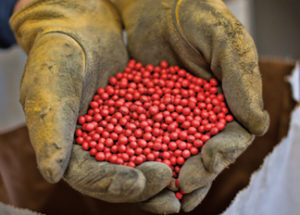
Start Your Season Off Right by Optimizing Planting
To achieve maximum yield from every bag of seed make sure to manage the factors at planting that can affect yield performance.
SOYBEANS
- Both ISU and UNL have shown yield benefits in earlier planted soybeans. If you break Nebraska and Iowa into thirds North to South, optimum planting time for soybeans begins the last week of April for the southern 2/3’s of both states and first week of May for the northern 1/3 of both states.
- Fungicide + insecticide seed treatments show even greater yield benefits at earlier planting dates. Soybeans in the ground early tend to have great exposure to diseases and insects. Our data shows a +1.9bu/ac average increase.
- Soybeans need warmer soils to begin germination, wait to plant until soil temps are above 55-60˚F. Injury can occur below 50˚F.
- Optimal planting depth for soybeans is 1.5”-1.75″. This allows for good root development and some protection from moisture and temperature fluctuations.
CORN
- Remember to give your fields time between Anhydrous Ammonia application and planting. The standard rule of thumb is 6-7 days.
- Corn does it’s best germinating at or above 50˚F as active growth slows or stops below that temperature. If your soil temps are in the high 40’s and rising, look at the 5-7 forecast before planting. If it looks to turn cooler and wet, consider waiting.
- If a cool or cold rain is in the forecast for the next 12-36 hours, consider waiting. Corn begins to take up water during this time to begin germination. If that water is too cold it can cause a condition called imbibitional chilling. Reduced stands occur because cold water can burst cell walls and lead to cell death.
- Optimal seed trench depth for corn is 2.5”. This depth helps to buffer and protect it from large fluctuations in temperature and moisture and root development. You should not plant corn shallower than 2.0”. Nodal roots develop when triggered by light interception. Corn planted less than 2.0″ deep does not have enough space to develop correctly. This can lead to stunted plants and reduced stands.
No one can wait to get finished with planting but make sure you don’t rush into a field that’s too wet. Side wall compaction reduces yield this season and deep compaction from machinery can impact yield for years.
